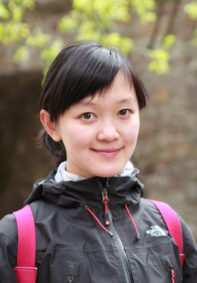Tailored piezoelectric thin films for energy harvester
Promotion date: May 17.
Promotor: Prof.dr.ing. Guus Rijnders
Co-promotor: Dr.ir. Gertjan Koster
| Piezoelectric materials are excellent materials to transfer mechanical energy into electrical energy which can be stored and used to power other devices. PiezoMEMS is a In this thesis, energy harvesters are made based on epitaxial PZT thin films with enhanced material properties. These piezoelectric vibration energy harvesting devices consists of a bulk mass attached to a cantilever. Before fabricating the device, the material properties are tailored to reach the optimal electric output. In particular, epitaxial PZT thin films with different compositions and different dopants are studied and a variety of dielectric and piezoelectric properties are discussed. In the end, the epitaxial vibration harvesting devices are fabricated, which is able to generate energy at micro power scale with low vibration state. Furthermore, after power normalization, a comparison is drawn between different vibration harvesters. An outperformance is shown in epitaxial PZT thin film harvesters compared to textured PZT and AlN thin film harvesters. The strong piezoelectric activity and the outstanding power output in epitaxial harvesters open a wide range of applications in industry. |
Was your project application oriented or also fundamental in nature?
Harvesting free vibration energy using piezoMEMS is an application field of great interest. I expect in three or four years some applications will become actual. PiezoMEMS can be implemented successfully in many applications, for example to supply energy to all kind of sensors present in the car tires already, like for pressure control. Also many applications in energy harvesters are within reach, for example: build in under highways to harvest vibration energy, or even in running shoes charging one’s Ipad.
My approach was directed towards applications in many ways, for example by collaborating on this with colleagues at the Holst Centre in Eindhoven. During the project we had several application meetings with partner companies interested in this kind of research.
By really fabricating a true device at the end of the project, we were able to show the potential of the tailoring of the material properties in the PZT thin films. We reached outstanding performances. Once again the quality of the film layer proved to be decisive for bringing future applications closer, though much is still unknown in detail still. Here the fundamental part of my work plays an important role, while the fabricating and application studying the properties together make the best performances of energy harvesters.
Do you recall some special moments during your thesis project?
We were able to show some excellent, enhanced results on the thin layer films which were a breakthrough in this field of research. This, of course, is a great joy publishing the results in Applied Physics Letters. Three other papers are still under way to get published in high rated magazines.
Furthermore, it took a lot of effort to fabricate a working device based on these films. Finally we succeeded and took great pleasure in experimenting with these devices.
What are your future plans?
I would like to go and work at a research department in industry, preferably in the Netherlands. My personal drive will be to bring fundamental findings closer to market applications. In this way people will be able to benefit from research on various fields of knowledge, make use of new materials or bring in modern optical techniques.
Using this knowledge and creating something new out of it, appears very exciting to me. During my thesis work I learned to challenge complex tasks getting to understand it more deeply, and studying it in a systematic way. Also I learned a lot of experimental skills which will be helpful in my future job.
What, in your opinion, is important for Mesa+ to stay successful in future?
As a member of the Inorganic Materials Science group, I collaborated on this subject with colleagues of the Transducers Science and Technology group, especially on theoretically modelling the wafer technology involved. Also, the collaboration with the technicians of the cleanroom was crucial. They were always friendly and willing to come and help me with the experiments. These collaborations are one of the key factors of success, I believe.
Also I like the way Mesa+ is encouraging small companies to start new businesses from the ideas generated at het University of Twente. Also the entrepreneurial skills of the students and PhD’s are supported. When one has a promising business ideas there are good chances to bring them to the market. Perhaps the Holst institute can also be part in this kind of initiatives in the future.

